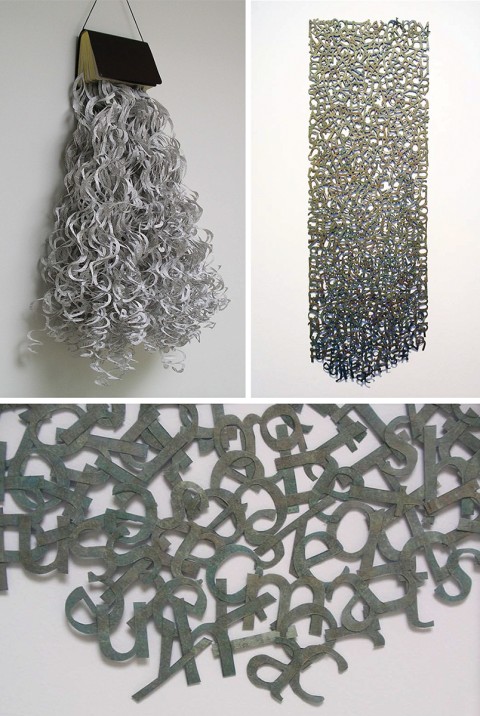Linda Ekstrom’s Pursed (upper left) and Mary (upper right, detail below)

(All images courtesy of the artist)
A leather-bound Bible hangs on the gallery wall, a strap running beneath its spine. Its cover is opened just enough so that torrents of thinly cut strips of scripture cascade from its gilt-edge pages. Has the artist vandalized the word? Or is she showing the word erupting from its rectilinear confines to act upon us?
Linda Ekstrom has been altering and reconfiguring Bibles since the 1990s. By cutting, braiding, pearling, chain-linking, and forming spheres from Bible pages, she summons viewers to ponder the sacred text via physical and tactile means, considering its presence anew.
In the rubrics of contemporary art, Ekstrom is a conceptual artist. But unlike the imageless, arid, and arcane textual presentations often associated with that term, her work embraces women’s handicraft and aesthetics: textiles, clothing, stitchery, embroidery, and fine art papers. Ekstrom draws spiritual sustenance from her participation in parish worship led by the Roman Catholic Women Priests movement. A lifelong Catholic, her early artistic commissions included the creation of modernist illustrations for the lectionary and psalter used in mass.



